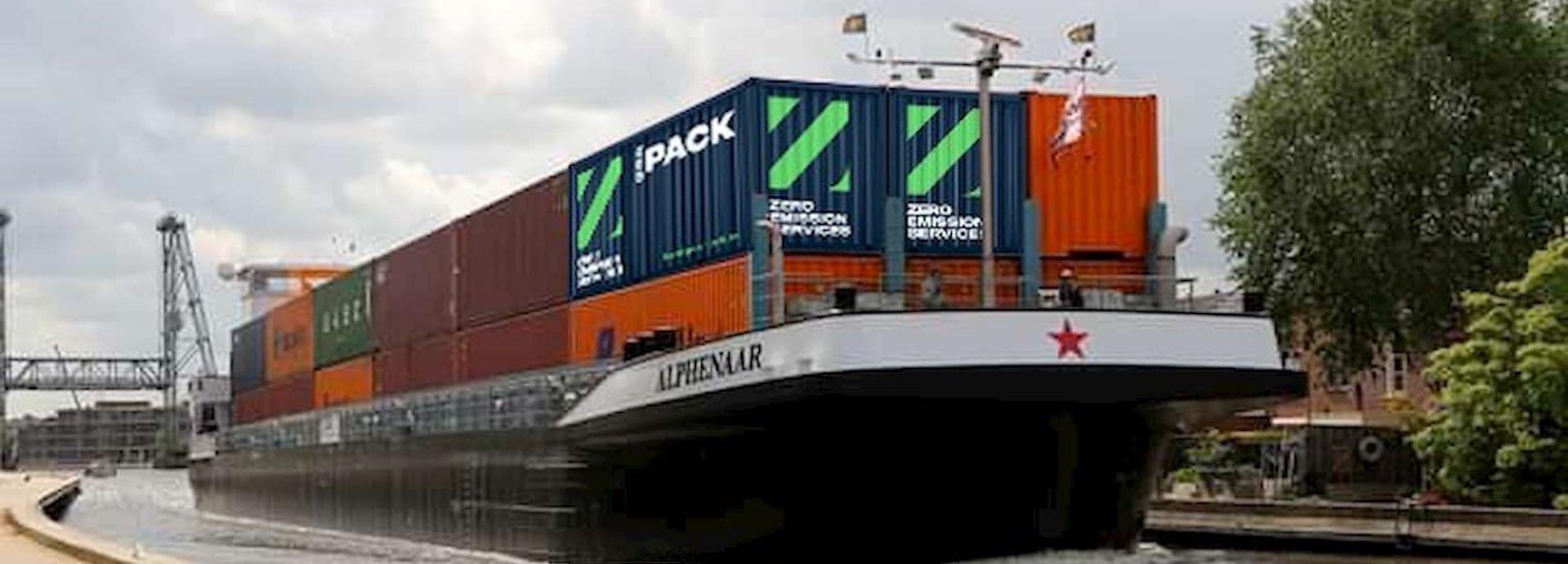

As the maritime industry seeks ways to become carbon-neutral, a new initiative – backed by some of the biggest corporations in the world – is designing entire systems to make inland waterways emission-free.
When brewer HEINEKEN decided it wanted a carbon-neutral way of moving 45,000 containers of beer a year along rivers and canals to the port of Rotterdam, it was not looking for a standalone solution. Instead, the company gathered a series of big corporate names to hit the start button on Zero Emission Services (ZES), which aims to revolutionise the use of inland waterways.
“The standalone solution is a ship and a battery – and that’s it. But we want to create systems,” says Jan Kempers, program manager for sustainable development at HEINEKEN Nederland Supply. “ZES is the beginning of a system to exploit zero-emission logistics for all the ships in our country. And potentially all the ships on inland waterways in the world. You need to think big.”
Since its launch in June, ZES has focused on switching the fuel energy systems of barges on Dutch waterways to electricity and replaceable battery containers, and setting up a network of charging points. The first ships powered by electricity from exchangeable batteries are set to transport beer from the HEINEKEN brewery in Zoeterwoude, via the inland shipping terminal Alpherium, by the end of the year.
‘Like electric cars’
The big challenge for ZES is to make the change to electric power a commercial prospect for ship-owners, even as diesel prices fall amid the coronavirus pandemic. Shipowners need to be convinced that the electric charging infrastructure will be in place and that battery-powered vessels are both safe, and reliable. More broadly, they need to believe that zero-emission shipping is the future of the industry.
“The problem is similar to electric vehicles,” says ZES head Willem Dedden. “You need [to be able to install] the infrastructure to charge the batteries whilst there is still little shipping. And you need shippers to buy this concept and make vessels ready while there is still little infrastructure. The challenge is to break through this catch-22 the sooner the better.”
If the company with its vision is going to succeed anywhere, it will be the Netherlands. Not only is there a dense network of navigable rivers and canals, but routes are mostly short, and containers are already widely used – a perfect combination for battery power. Of the 10,000 inland waterway vessels operating in northwest Europe, 8,000 are Dutch-flagged.
The promise of stability
The backing of large European companies gives ZES an important edge over previous schemes for waterway electrification that came to nothing. ZES was founded by ING bank, energy and technical service provider ENGIE, maritime technology company Wärtsilä and the Port of Rotterdam Authority. It also has the backing of the Dutch Ministry of Infrastructure and Water Management and Heineken has signed on as the first customer for at least a decade.
All the companies make a unique contribution. For example, Wärtsilä has drawn on its inland waterway experience to create the most effective battery containers and is exploring innovative retrofitting solutions for diesel-powered ships. ING Bank has come up with a ‘pay-per-use’ scheme that will minimize the financial risks for ship owners.
“This is a collaboration of very powerful companies, solid companies with known names, solid organisation and so on — the combination makes this potentially more successful than all the other initiatives,” says Kempers.
A recipe for success
ZES is also counting on state aid, which will be vital in the early stages of the project. “We need the support from legislation and governments to take the first steps and demonstrate that it all works,” says Teus van Beek, general manager of ecosystem innovation at Wärtsilä.
This support can take many forms, from financial grants to tightening the regulations on diesel-powered ships. Kempers points out that legislation that is already coming down the line will make an increasingly persuasive financial case for ZES.
“One way or another the near future will be an expensive period for ship owners,” he says. “Why not move away from fossil fuels and chose transformation to a full electric vessel?”
Looking ahead
Under ZES’ current plans, there will be 150 electric-powered ships using its batteries by 2030, requiring about 20 docking stations and 300 battery containers. This would go a significant way in reducing the carbon footprint of inland navigation in the Netherlands, which currently accounts for 5 percent of the Dutch transport sector’s carbon emissions.
But ZES is not about battery-power alone: the company’s infrastructure is designed to be ‘future-proof’ and can, for example, be easily adapted to switch to hydrogen-power. “The beauty of the system is that it is flexible, versatile and scalable,” says Dedden.
As the coronavirus pandemic makes a short sea shipping surge a much-discussed possibility, any success enjoyed by ZES in the Netherlands could be a model for other locations. “It’s a step forward for shipping. After the inland waterways you can think about other smaller, vessels like shore sea shipping and ferries,” says van Beek. “Over time we will find locations with suitable routes where we can use the technologies we are developing."

